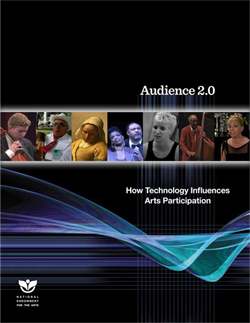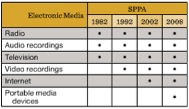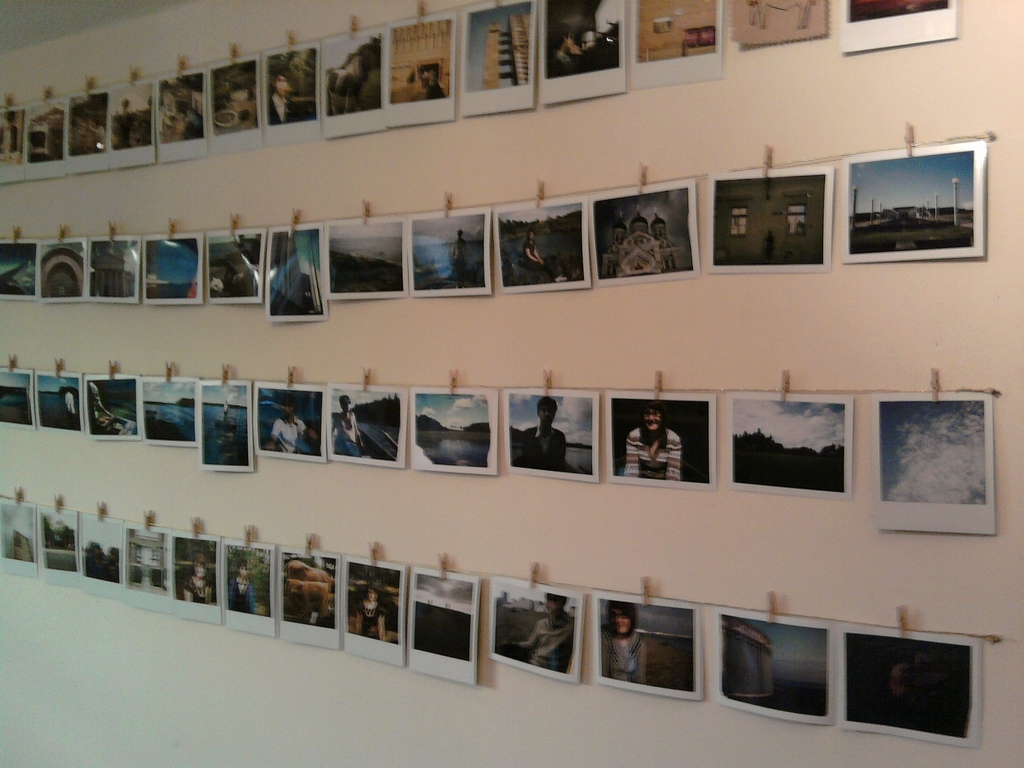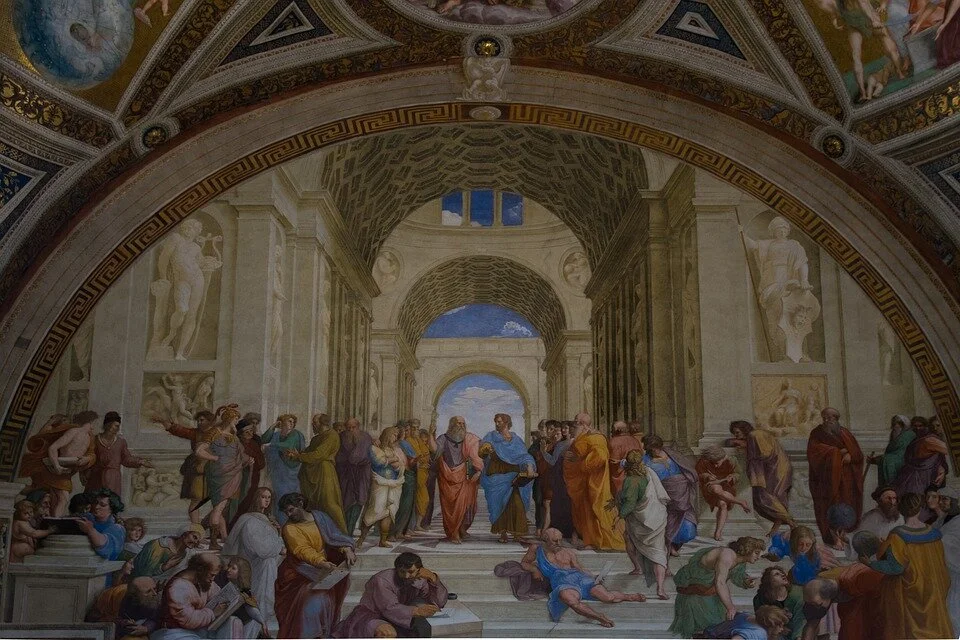Underneath the Disney magic at its resorts is Near-field communication (NFC) technology, which has been transforming live event experiences for years. Disney Parks is at the forefront of the change, having utilized the all-in-one-device MagicBand since 2013, which renders the park into dynamic computer, streaming real-time data about where guests are and what they are buying. This “invisible” wearable technology has created a seamless guest experience where people are happier by stripping their options away. How can this technology be leveraged and integrated into arts institutions and yield the same immersive, seamless experience? This article explores NFC technology and how arts organizations can utilize it to enhance their overall service and audience engagement.
2021 Top 10 Most-Read Articles
As we welcome 2022 for myriad reasons, be sure to catch up on what you missed in 2021 by reading out top 10 most read articles. Surprisingly (or not), while the last year continued to show interest in covid’s impact on technology and work, our readers were curious about a broad set of content — from NFTs to using technology to track dance. Which of these articles did you read, or miss?
Aristotle & Gaming Case Studies (Tragedy is Fun: Aristotle Revisited)
As noted in How Video Games Can Serve as an Engagement Experience, video games, particularly RPGs, are widely popular and engaging with exceptional character and plot structure. The Elder Scrolls V: Skyrim and The Witcher 3: Wild Hunt exemplify Aristotle’s model of dramatic tragedy in a modern form. These case studies prove that video games are fun, tragedy is fun, and by marrying the two, arts organizations can experiment with exciting new forms of audience engagement!
Gamification in Arts Education
Recently, arts organizations have also sought to gamify different aspects of their institutions to engage visitors, increase fundraising, or improve marketing objectives. Although many industries—like the arts—are developing gamification concepts, many are not applying them in the most effective way. For educational programs to effectively gamify the learning experience they must understand gamification and all its parts.
Artifical Intelligence and Audience Engagement for the Performing Arts
As time goes on, it’s clear that artificial intelligence will continue to find its place in the arts. Using AI to build connections with audiences, in particular, is an interesting and developing sector of arts and technology. The performing arts are primed for a technology jumpstart and a reassessment of audience engagement tactics. Now, more than ever, the opportunities for the integration of artificial intelligence and audience engagement in the performing arts are ripe for exploration.
Connecting People to Place: How Digital Maps Advance Civic Engagement in the Cultural Sector
In a time where we can build and access a wealth of geographic information through our mobile devices and online, digital tools are being leveraged to make these kinds of civically engaged connections. Digital maps, in particular, have been built to service archival needs as well as transform the public’s interaction with art and archeological sites. By examining how organizations have deployed various digital map technologies in their work, we can also see how these tools have practical value and the potential to more broadly advance the cultural fields.
What is Internet2 and How Can Music Education Programs Use It?
Imagine a network like the Internet, except exclusive in access meaning no commercialization. That’s Internet2, which exists to streamline network access for entities with a commitment to research and education.development. This paper examines the technology and its various uses to music organizations in both education and performance contexts.
Wading Into Live Streaming with Facebook Live
Live streaming has become a popular trend for performing arts organizations, and many have turned to Facebook to broadcast their shows. Many organizations may find it beneficial to start their live streaming journey with Facebook Live, continue to use the platform for events that are likely to attract a lot of Facebook users, and invest in higher quality live streaming services as they grow.
The Future of CRMs: Five Up and Coming Features That Could Benefit Your Arts Organization
An Overview of VR Hardware Options
Multi-Touch Technology and the Museum: An Introduction
Touchscreens have altered the way we interact with our world. From scrolling through our Facebook newsfeed, to picking up tickets at the airport kiosk, we use this technology on a daily basis. Today museums around the world are embracing this tool as a way to promote interactive learning. Multi-touch technology, in particular, can create an interactive and collaborative learning environment. But what exactly is multi-touch technology?
SecondSundaySurvey: Trends in Digital Video Consumption
More and more arts organizations are investing in digital video production as a means of engaging audiences who want to know more about arts programming. These audiences connect across a spectrum of devices, so knowing how audiences consume video will help organizations create the best format for engagement. A new survey conducted by Ooyala illuminates these patterns and provides vital insight to the conversation surrounding video distribution.
The Giving Pledge: A Start to Engage Tech Philanthropy
To understand why arts organizations have struggled to capture funds from tech billionaires, arts managers and development professionals would do well to recognize what philanthropic sectors they are losing these dollars to, and why. Armed with these insights, arts professionals can then adjust their strategies to better appeal to this new and growing donor segment.
Audience 2.0 - Condensed, Part I
 In part I of this two-part post, I summarize the findings of Audience 2.0, while tackling the problems, questions and lack of answers in part II.
Audience 2.0: How Technology Influences Arts Participation, the newest study released by the National Endowment of the Arts gives empirical quantitative data to support how technological trends affect arts participation, the health of the arts in the US, and the ways that arts patrons use electronic media to engage in the arts.
In part I of this two-part post, I summarize the findings of Audience 2.0, while tackling the problems, questions and lack of answers in part II.
Audience 2.0: How Technology Influences Arts Participation, the newest study released by the National Endowment of the Arts gives empirical quantitative data to support how technological trends affect arts participation, the health of the arts in the US, and the ways that arts patrons use electronic media to engage in the arts.
Audience 2.0 takes data from the NEA’s 2008 Survey of Public Participation in the Arts and the three other SPPA studies from 1982, 1992, & 2002 and “examines how Americans participate in the arts via electronic and digital media.” The media platforms: Radio, Audio recordings, Television, Video Recordings, Internet, & Portable Media Devices were tracked, but there is not consistant data available from every study.

The study cited three main conclusions:
- Technology is not going to be the downfall of live performances, the arts or culture in our society,
- Technology provides a new outlet for people to experience the arts who may not otherwise have participated at all.
- Participation in the arts through electronic and digital media actually spurs participation in live arts performances and exhibitions.
The study found that “people who engage with art through media technologies attend live performances or arts exhibits at two to three times the rate of non-media arts participants.” This statistic should quell many of the concerns arts organizations have about digital media replacing them and help arts institutions embrace technology as a way to reach enrich their patrons. The study shows that technology provides a way for people to interact with arts and culture outside of the traditional venue, but it does not replace attending the physical arts or event space.
“53% of US adults used TV, radio, CDs/DVDs, computers or portable media devices to view or listen to arts performances, programs about artists, art works, museums or programs about literature.” Far more people participate in the arts as a whole than those who physically attended arts events. This shows a greater interest in arts and culture from Americans than many people had previously thought.
“For every arts performance outlet besides theater, adults were more likely to view or listen through electronic media than to attend live events.” This statistic has many people concerned about the impact of technology on the arts, however; the data shows this to be a good thing because a majority of the participants who make up the media only category represent people who would never have attended an arts event in the first place. The NEA then draws the correlation that these people would not participate in the arts at all without media and electronic technology outlets. Technology helps to widen the breadth of reach for the arts and allows people to participate in the through new portals.
Adults who used electronic media and technology only to participate in the arts had a higher likelihood of lower-than-average household incomes, residing in rural residents, belong to racial and ethnic minorities, belonging to that age group 75+, and/or having achieved no more than some college in their life. This profile directly mirrors the profile of people who do not participate in benchmark arts events at all.
The big picture of this survey is that it really just repeated many of the SPPA findings from the past three decades through the lens of technology. Overall, Education still has the greatest weight in determining arts participation, racial and ethnic minorities participate less than non-Hispanic whites, and racial and ethnic minorities tend to participate more frequently in arts event that are associated with their heritage.
This study leaves more questions than answers and those will be tackled in part II of this series.
Why Flickr? Using photos to tell your story

While discussing various uses of social media by arts organizations, a coworker mused, "But why Flickr?"
"Why Flickr?" indeed. Or perhaps, more accurately, HOW Flickr? After prowling around in search of arts organizations that are using Flickr in interesting and relevant ways, it seems pretty clear that the question should be addressed.
Since the internet can transmit exciting, attractive, visual media, rather tell you about what you can do with Flickr, I will let the photos save me a thousand words.
The Mattress Factory's photostream -Inviting front page -Colorful photos with good composition and interesting content -Current (there's this week's snowstorm!) -Clearly organized into sets [e.g. "Behind the Scenes" (something that I strongly believe in--because, as we know, "Everyone wants to feel like an insider."), "Exhibitions" or "Events"] -Flickr page is linked from the social media ("Friendship 2.0") page on the Mattress Factory's website.
Misnomer Dance Theatre's photostream -Inviting front page -Colorful, bright, energetic photos -Clearly labeled sets -Misnomer home page has a Flickr widget at the bottom
Steppenwolf Theatre Company's photostream -Clear differentiation among sets (e.g. rehearsal pics in black and white) -Behind-the-scenes and production shots -Some albums show interaction with audience -Linked from SteppenwolfTheatre.org
The American Conservatory Theater's photostream -Don't all look professionally-shot, but convey a spirit and energy -Show many aspects of the production -Show interaction with patrons -Linked from ACT homepage
The Whitney Museum's photostream -User-generated photos -Linked from "Get Involved" page on Whitney's website -Discussion forum (with some involvement)
I do want to say what I have seen that I haven't found effective. Too often organizations do a couple of things: they have an intern, or a staff member, who manages their photostream (that's their page on Flickr) from a personal profile. That doesn't make me want to engage. Instead, it makes me feel like I'm encroaching on a space to which I am not convinced I'm invited. Organizations that DO use Flickr, and have someone taking photos to PUT on Flickr, should have an organizational profile and should have a Flickr widget or link prominently placed on the homepage. (And, pet peeve, I think the best widget is one that actually SAYS "flickr" and doesn't just have the dot-logo).
Other huge turn-offs? (Apologies for immenent snarkiness.) I don't want to name names here, but organizations that essentially just do a mass-upload from their camera after an event: shudder. Do your audience a favor and sift through them to find the ones that actually look interesting and lively. I don't particularly care to see an entire album of a group of students all with their backs to the camera. Having endless posed pictures of people standing and smiling together like the social pages looks like bragging, and not a lot like fun. It's fine to include a few, but thirty?


















